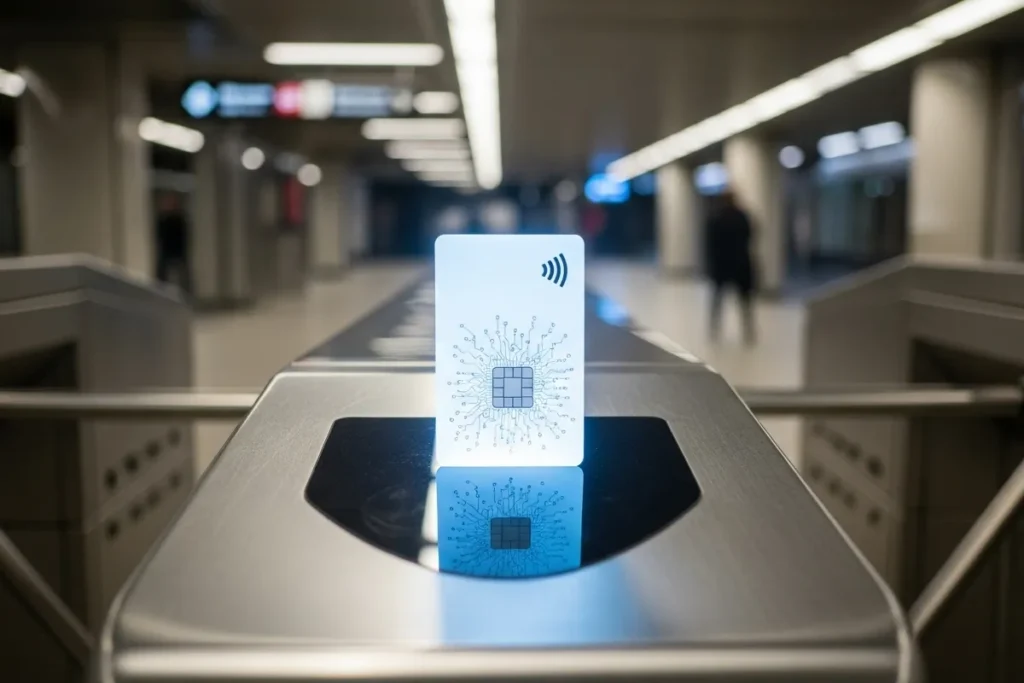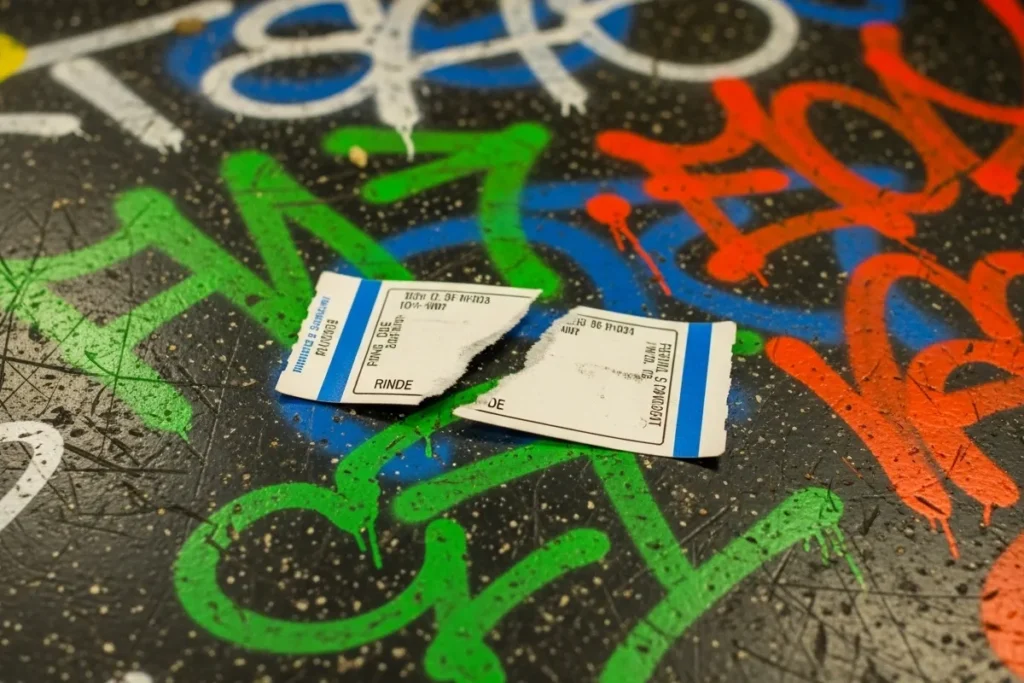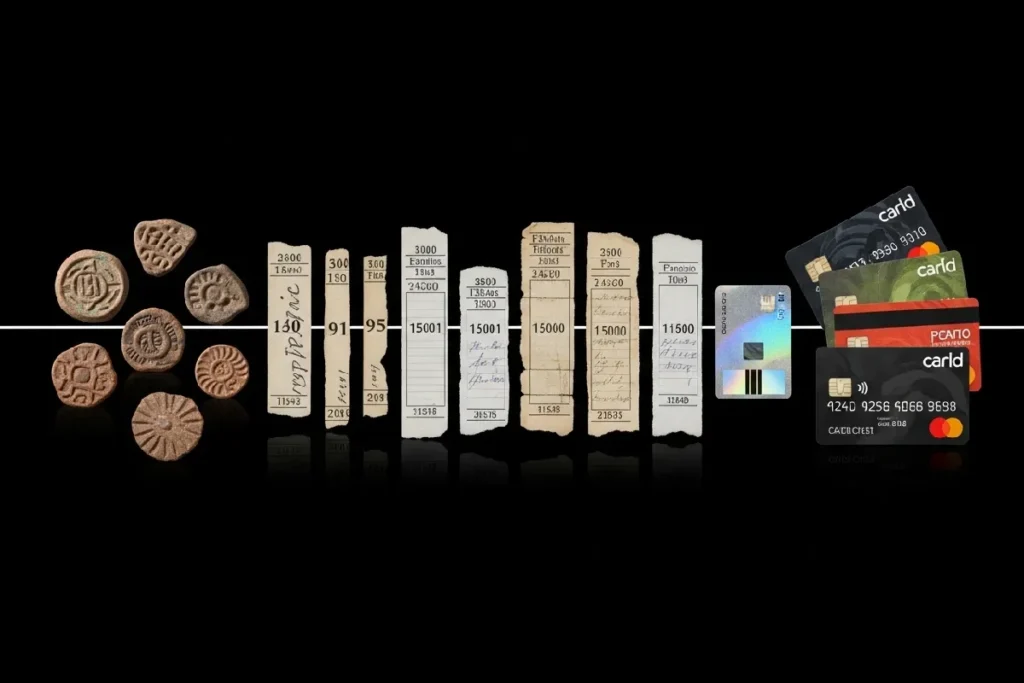A ticket is more than a fare—it’s an instrument of power. Discover the full history of the ticket and uncover its role in dividing cities, enforcing class, and sparking popular revolt.
Table of Contents
Introduction
To truly understand the modern city, one must first understand its tickets. The complete history of the ticket is a masterclass in urban power dynamics, revealing a story far more complex than a simple passage. This mundane slip of paper—or, increasingly, a transient flash on a screen—has always been a paradox. It is both a key and a cage; a license to move and a tool of social sorting.
For over a century, this artifact has quietly dictated who can access the economic and cultural heart of our cities, how they can get there, and what their journey says about their place in the social hierarchy. It is the silent arbiter of mobility and equity, and its existence has been a constant source of friction, a low-grade fever in the body politic that periodically erupts into open revolt. The conflict it represents—between the corporate need for control and the public demand for access—is the central drama of urban life.
This article charts that contentious history, tracing the ticket’s evolution from a simple instrument of industrial order into a sophisticated weapon of social engineering. We will begin by examining its birth, a product of 19th-century capitalism’s demand for legibility and control over the new urban masses. From there, we will dissect how it was almost immediately used to forge class divisions, turning public transit into a theater of social status.
We will then explore the inevitable backlash: a history of fare wars, boycotts, and rebellions where the history of the ticket became a symbol of defiance. This journey brings us to the present digital turn, where the physical ticket vanishes, only to be replaced by a system of pervasive surveillance that creates new, invisible forms of exclusion. Finally, we will consider the radical possibility of a future without fares, asking whether we can finally build cities where the right to move is truly universal.
The Genesis of Passage: The Birth of the Modern Ticket
To understand the ticket’s eventual power, one must first appreciate the world before it. The pre-ticket era of early mass transit was a system of negotiated, often informal, transactions. Passengers paid coachmen directly with cash or purchased rudimentary metal tokens, a method that, while functional, was rife with fraud and offered operators little in the way of systematic financial control or passenger data. This system couldn’t last.
The explosive growth of railways and omnibuses during the Industrial Revolution created a logistical problem of unprecedented scale, and this chaos necessitated a new instrument of order. The formal history of the ticket truly begins here, born not of a desire for passenger convenience, but from an urgent corporate need for standardization and control.
The solution arrived in the 1840s with the Edmondson railway ticket, a simple cardboard rectangle that would define the very essence of passage for over a century. Its brilliance was in its uniformity. Pre-printed with destinations, fare classes, and a sequential serial number, and validated by a dating press, it transmuted the messy act of fare collection into a clean, auditable transaction. Yet, the benign efficiency of this invention belies its deeper function. This crucial chapter in the history of the ticket was not merely about collecting revenue; it was about collecting information.
The serial numbers allowed for tracking and reconciliation, while the specified routes codified passenger movement. The ticket was, from its very inception, a data-gathering device—a harbinger of the sophisticated surveillance that would later define the evolution of fare media. It inaugurated the ticket’s dual identity: a key for the passenger, but a ledger for the powerful, setting the stage for its complex role in shaping urban life.

Forging Divisions: The Ticket as a Class Marker
Once established, the ticket quickly evolved from a tool of mere accounting into an active agent of social stratification. The physical artifact itself became a powerful social signifier. An embossed, card-stock ticket for a first-class carriage was a world away from the flimsy, disposable stub for third-class or steerage; one was a keepsake of privilege, the other a transient proof of payment for the masses. This deliberate differentiation in the ticket design timeline was the most visible way that public transport history mirrored and reinforced the rigid class hierarchies of the era. The journey may have been shared, but the experience, as codified by the ticket in one’s pocket, was anything but equal.
This stratification extended beyond the vehicle and into the very fabric of the city through a practice one might call ‘redlining by rail.’ The implementation of fare zones and punitive transfer policies was rarely a neutral act of logistics. Instead, it often functioned as a mechanism of economic and racial segregation, making it prohibitively expensive for residents of outlying, often poorer, neighborhoods to access the central business districts and affluent areas. The ticket, in this context, became a paper wall, enforcing the geographic boundaries of inequality.
This dark chapter in ticketing and social justice illustrates how fare structures can be weaponized as tools of urban planning. Ultimately, every design choice—from the quality of the paper and intricacy of the typography to the very price printed upon it—contributed to an aesthetics of exclusion. The history of the ticket is therefore inseparable from the history of social division; it was an object that didn’t just grant passage, but publicly declared one’s place in the established order.
The People vs. The Price: A History of Fare Revolts
It was inevitable that an instrument of control would provoke acts of defiance. The history of the ticket is therefore a dual narrative: one of top-down regulation and another of bottom-up rebellion. The first fare wars erupted in the late 19th and early 20th centuries, as streetcar companies, often holding powerful monopolies, attempted to raise prices. These weren’t minor squabbles; they were flashpoints for widespread urban unrest. Boycotts, organized by nascent labor unions and community groups, saw citizens walking miles to work in solidarity, crippling the transit systems and demonstrating that the public would not passively accept the commodification of their mobility. The affordability of a single ticket became a potent catalyst for collective action.
Beyond organized boycotts, the ticket itself was transformed into a symbol of defiance. The subversive history of the ticket is written in acts of fare evasion, elevated from petty crime to political statement. “Trolley dodging” became a widespread tactic, while public ticket-burnings served as potent, mediagenic moments of protest against fares. These actions were a direct rejection of the system’s legitimacy. To destroy or bypass the ticket was to symbolically dismantle the authority it represented. This codified defiance shows that ticketing and social justice have long been intertwined battlegrounds, where the oppressed found ways to claim agency.
Crucially, these protests were never just about the price of a ride. They were inextricably linked to broader movements for economic and social justice. The fight for an affordable fare was inseparable from the demand for a living wage, as the cost of transit directly impacted a worker’s take-home pay. It was connected to housing rights, as fare hikes further isolated those pushed to the urban periphery. The struggle over a small piece of paper was, in reality, a proxy war for the fundamental right to participate in the city’s economic and civic life, a theme that echoes through public transport history to this day.

The Digital Turn: From Paper Stubs to Pervasive Surveillance
The late 20th century marked the beginning of the end for the tangible ticket. The slow demise of paper and tokens gave way to a rapid technological succession, a clear acceleration in the evolution of fare media. First came the magnetic stripe, a fragile bridge to the digital age, but the true revolution arrived with RFID-enabled smart cards like London’s Oyster and New York’s MetroCard. This shift dematerialized the ticket, transforming it from a discrete object into a persistent, reloadable identity.
The final step in this progression was the complete absorption of the ticket into the smartphone, where app-based QR codes and contactless payments rendered any dedicated transit artifact obsolete. The modern history of the ticket is one of its disappearance, a vanishing act that traded physical form for digital omnipresence.
This transition was sold to the public on the promise of seamless convenience, but it came with a profound and often unstated trade-off: privacy. Every tap of a card or scan of a phone creates a permanent, time-stamped record of an individual’s movement through the city. The ticket’s original function as a rudimentary data-gathering tool has now reached its apotheosis. Transit authorities and the tech companies they partner with now possess granular data sets on the daily patterns of millions, information ripe for analysis, monetization, or state surveillance. This is the new, invisible power of the ticket—a form of control far more subtle and pervasive than the class-sorting of a cardboard stub.
Furthermore, this digital turn has erected new, formidable barriers to access. The move toward cashless and smartphone-dependent systems creates a digital divide that actively excludes the most vulnerable. The unbanked are left behind at fare gates that no longer accept cash; the elderly may struggle with the required technology; and low-income individuals may not be able to afford the prerequisite smartphone and data plan. The core issues of ticketing and social justice have not been solved by technology; they have merely been updated. The paper wall of the past has been replaced by a digital one, which is just as effective at determining who gets to move freely and who is left standing on the platform.
Fare-Free Futures: Reimagining Mobility Beyond the Ticket
The logical culmination of a century of fare revolts is the most radical proposition of all: the complete abolition of the ticket. A growing and increasingly successful global movement for zero-fare transit represents a philosophical repudiation of the ticket’s role as a gatekeeper. Pioneering cities like Luxembourg, Kansas City, and Tallinn are treating mobility not as a commodity to be purchased, but as a public utility, as essential and universal as a library or park. This is more than a policy experiment; it is an attempt to finally sever the link between a person’s income and their right to move through their city, challenging the foundational premise that has defined the entire history of the ticket.
However, designing for true urban mobility equity demands that we look beyond the simple act of making a ride free. A zero-fare bus that only arrives once an hour in an underserved community is not a tool of liberation; it is a hollow promise. Achieving genuine access requires a holistic reimagining of the service itself: drastically increased frequency, routes designed to connect marginalized communities with opportunity, and democratic governance that prioritizes riders over revenue.
Removing the fare is the necessary first step, but the ultimate goal must be to dismantle the deep structural inequities that the ticket has always helped to enforce. The fight for justice in transit is not just about the price, but about the quality and dignity of the service provided.
This brings us to the final, speculative question: what happens when the ticket—as a physical or digital artifact—disappears entirely? We must be cautious in celebrating its demise. The ticket’s long history is one of control, surveillance, and exclusion. Does that legacy truly vanish when the object does, or does it simply sublimate into new, more opaque forms of social management? As we move toward systems that could one day use biometric data or digital IDs for passage, we must ask if we are ending the era of the ticket, or merely perfecting its power to track, sort, and control.

Conclusion
Throughout its long and contentious history, the ticket has proven to be far more than a simple receipt for passage. We have seen how it was forged in the crucible of the Industrial Revolution, not for the passenger’s convenience, but for the operator’s control. It was an instrument of order that quickly became an instrument of stratification, its very design and price structure engineered to create and enforce a rigid social and spatial hierarchy.
Yet, this history of top-down control is shadowed by a parallel history of bottom-up rebellion. From organized streetcar boycotts to the defiant act of fare evasion, the ticket was consistently transformed into a symbol of protest, a focal point for the broader struggle for economic and social justice in the city.
This fundamental tension has not been resolved in the modern era; it has simply been digitized. The transition from the cardboard stub to the smartphone app represents the culmination of the ticket’s original purpose: total information awareness and frictionless control. The physical walls of exclusion have been replaced by invisible digital divides, which continue to sideline the unbanked, the elderly, and the poor. The core lesson from the history of the ticket is therefore undeniable: it has never been a neutral object. It is, and has always been, a mirror reflecting a society’s deepest anxieties about class, space, and the fundamental right to mobility, forcing us to confront who is granted access and who is deliberately left behind.
As we stand on the precipice of a new era in public transport, the lessons of the past offer a clear mandate. The growing movement for fare-free transit presents an opportunity to finally dismantle the architecture of exclusion that the ticket was built to maintain. But abolishing the fare is only the beginning. The true challenge for urban planners, activists, and policymakers is to apply this historical understanding to design systems built not for revenue and surveillance, but for universal access and equity. The question posed by the humble ticket remains the defining question for our urban future: will we build networks of genuine freedom, or will we simply invent more sophisticated gates to keep people in their place?








